"We are one of the largest, most diverse, and most research intensive departments at the University of Otago, and indeed New Zealand."
Neil Gemmell, Head of Department (2014—2017)
The Department is engaged in high quality, internationally recognised research, focusing on four main areas: Biological Anthropology, Clinical Anatomy, Neuroscience, and Reproduction, Genomics and Development.
We utilise a vast repertoire of state-of-the-art technologies to investigate how our bodies function - from stem cells through to whole body systems - and what happens when disease or injury occurs.
We also explore the influence our genes and our environment have on us as individuals and as populations. We look at this from both a developmental and an anthropological angle.
Much of our work is done in collaboration with other leading universities and research institutes all over the world.
Our research is not limited to humans, but explores these questions across a number of animal taxa.
Anatomical Sciences Education Research Team
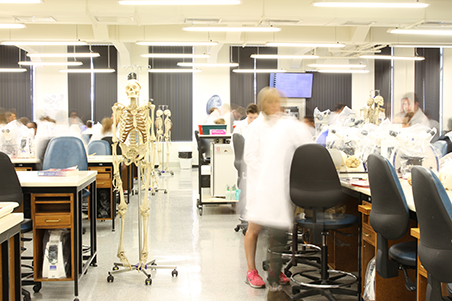 The Department of Anatomy prides itself on its teaching, and members of the Anatomical Sciences Education Research Team (ASERT) aim to inform our teaching practice by conducting research into teaching methods and student outcomes. Members of ASERT are interested in how we communicate anatomical knowledge, and creating practical solutions to common teaching difficulties. ASERT works closely with students to understand their needs and knowledge uptake – improving our teaching and helping them to achieve their learning goals.
The Department of Anatomy prides itself on its teaching, and members of the Anatomical Sciences Education Research Team (ASERT) aim to inform our teaching practice by conducting research into teaching methods and student outcomes. Members of ASERT are interested in how we communicate anatomical knowledge, and creating practical solutions to common teaching difficulties. ASERT works closely with students to understand their needs and knowledge uptake – improving our teaching and helping them to achieve their learning goals.
ASERT members are involved in a range of research projects which span multiple areas of teaching in the anatomical and health sciences.
Biological Anthropology: Unearthing our journey
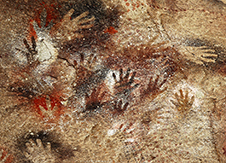 The Biological Anthropology Group study human populations of today and the past to answer questions about who we are and where we come from.
The Biological Anthropology Group study human populations of today and the past to answer questions about who we are and where we come from.
We have both a state of the art ancient DNA lab and a fully-equipped modern DNA lab. We also have facilities for isotopic studies, human osteology laboratories and one of the best anatomical teaching collections in the world. We use these, combined with extensive fieldwork, to explore topics ranging from bioarchaeology to conservation genomics; from human origins to paleopathology.
We ask questions like how did humans populate the pacific and what impact did they have on the environment? How did a move to agriculture affect our health and social status, and what impact does our past have on health issues we face today?
The bulk of our research is in the Asia-Pacific region, but our studies reach as far afield as Ireland and Africa and we collaborate with leading researchers and local indigenous communities all over the world.
Our goal is to understand and explain human variation, and how our various journeys influenced, and were influenced by, our biology, our cultures, and the places we encountered along the way. We believe that by understanding and learning from our past, we can inform our future.
Clinical Anatomy: Understanding how we work
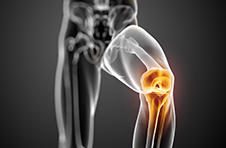 The Clinical Anatomy Group study structures within the body to better understand the anatomy of healthy individuals and factors that contribute to disease or dysfunction within these structures.
The Clinical Anatomy Group study structures within the body to better understand the anatomy of healthy individuals and factors that contribute to disease or dysfunction within these structures.
Most of us come from a clinical background and the focus of our research is on injuries and illnesses that our fellow surgeons and clinical practitioners face on a regular basis. We work in collaboration with these clinicians, developing better tools and treatment options our colleagues can utilise in their day to day practice.
We address questions like what can we do to make surgical implants more compatible with the human body and how might external nerve stimulation techniques be used to treat internal injuries? We are also interested in finding out how muscle anatomy changes in people with longstanding pain, and how the structure of tissues contribute to their overall function.
Our group's tool box includes many traditional and high-tech research methods, but it is the invaluable resource of donated human bodies that really makes our work possible.
Our ultimate goal is to honour these donors and their families by expanding our knowledge of how the human body works and finding new ways to improve health, ease pain and potentially save lives.
Neuroscience: Discovering how we think, feel and do
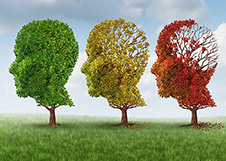 The Neuroscience Group study brain health, disease and repair to help find answers to some of the most important questions in neuroscience today...
The Neuroscience Group study brain health, disease and repair to help find answers to some of the most important questions in neuroscience today...
How do our brains, and the connections between our brain cells, form, and how do our genes or factors in the environment affect this? How are our memories made and why do some diseases cause us to forget? What happens to our brains when we get old and what can we do to repair and prevent that damage?
We utilise a number of cutting edge techniques like optogenetics, next generation sequencing, bioinformatics, and high resolution imaging. These techniques allow us to explore the brain right down to the synapse, or subcellular level.
Most of us work in collaboration with larger research groups, both nationally and internationally, pooling our resources and our knowledge to expand our collective understanding of the human brain.
The goal for us, and our collaborators, is to find ways to maximise brain health before birth and across our lifespan, and to prevent or slow the neurological consequences of aging so people can enjoy long and healthy lives.
Reproduction, Genomics and Development: Exploring how we all begin
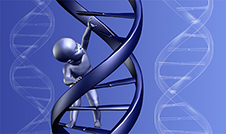 The Reproduction, Genomics and Development Group study how life begins and the processes that affect how those first cells differentiate and grow into a fully functioning adult.
The Reproduction, Genomics and Development Group study how life begins and the processes that affect how those first cells differentiate and grow into a fully functioning adult.
Some of the questions we address are how do hormones regulate reproductive behaviour and physiology, how does our development affect our health and why do some developmental problems affect one sex more than the other?
Our research also includes the use of genomic technologies to develop humane and effective pest control methods, to detect infectious diseases in humans and animals, and to investigate the consequences of inbreeding in New Zealand bird populations...
At our most fundamental level we are exploring new ways to harness the highly potent cells from which all life ultimately begins.
Our research topics cover the spectrum from human health to conservation genomics but our goals are the same: to develop better tools and strategies to overcome the issues facing us today.